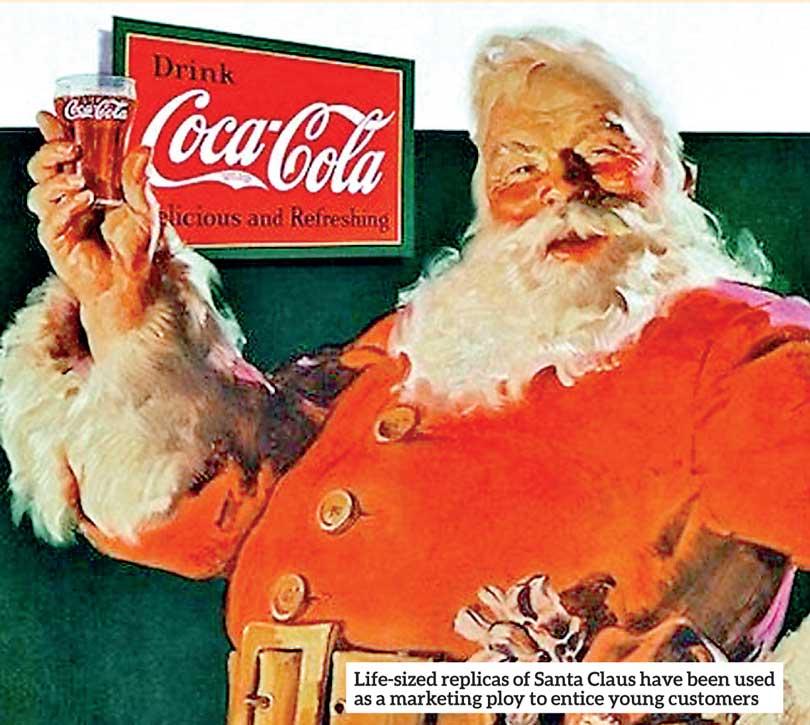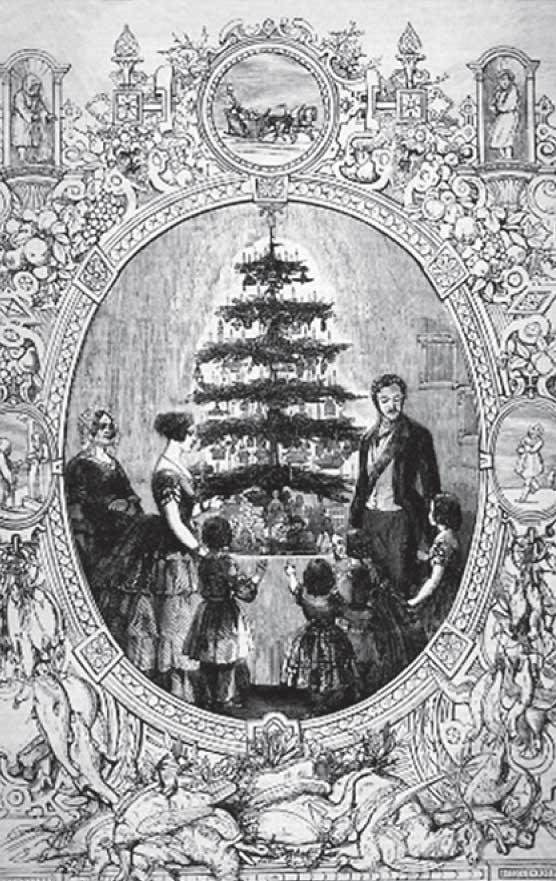26 Dec 2023 - {{hitsCtrl.values.hits}}


An illustration from December 1848 edition of The London News shows Queen Victoria and her family surrounding a Xmas tree
The history of holiday-themed advertising began in the mid-1800s when Sir Henry Cole hired John Calcott Horsley, an artist, to create a unique Christmas card that he could give to his business associates. This marks the beginning of Christmas cards. This is also the point at which the pleasures of the Christmas/Holiday season, which are still primarily religious, begin to meld with business
 It is true that Christmas has been far more commercialised than any other religious holiday worldwide. There is a positive aspect to it though, as well, since there are a tonne of imaginative and colourful greetings posted by firms worldwide.
It is true that Christmas has been far more commercialised than any other religious holiday worldwide. There is a positive aspect to it though, as well, since there are a tonne of imaginative and colourful greetings posted by firms worldwide.
Do you find the word Xmas, as an abbreviation for Christmas, offensive? Many people do, but the origin of this controversial term might change your mind.
You won’t find Xmas in church songbooks or even on many greeting cards. Some people associate Xmas with the holiday as a commercial, secular occasion instead of as a particular cultural and religious ritual.
But, the history of the word Xmas is actually more respectable—and fascinating—than you might suspect. First of all, the abbreviation predates (by centuries) its use in gaudy advertisements. It was first used in the mid-1500s. X represents the Greek letter chi, the initial letter in the word Χριστός (Chrīstos). And what does Χριστόςmean? “(Jesus) Christ.” X has been an acceptable representation of the word Christ for hundreds of years. (And why would people need to abbreviate Christ? Well, the word is very widely written.)
Where does the –mas in Christmas come from?
The –mas in Xmas comes from the Old English word for mass, as in a church service, especially one in the Roman Catholic Church including a celebration of the Eucharist. That word, mæsse, is believed to have been derived from Church Latin missa, ultimately from Latin mittere which means “to send (away).” It was perhaps derived from the concluding formula in the Latin mass, Ite, missa est, meaning “Go, it is the dismissal!” That is, the service is over.
The history of holiday-themed advertising began in the mid-1800s when Sir Henry Cole hired John Calcott Horsley, an artist, to create a unique Christmas card that he could give to his business associates. This marks the beginning of Christmas cards. This is also the point at which the pleasures of the Christmas/Holiday season, which are still primarily religious, begin to meld with business.
As a shopping incentive, things that are particularly marketed as Christmas gifts and that have special prices for the season start to appear around the late 1800s. One of the businesses to do this is Burroughs, Wellcome & Co., a chemist (pharmacist) in the United Kingdom. They advertised their medicines as “Christmas Presents” in the trade journal “The Chemist and Druggist.”
The Beginnings of Holiday Marketing
Women’s Home Journal and other penny press products were major contributors to the Christmas spread. A large portion of Christmas lore was solidified in popular consciousness as a result of the stories and advertisements in these periodicals. For instance, the picture of Queen Victoria and her family gathering around a Christmas tree that appeared in Godey’s Lady’s Book, the most popular magazine at the time, is credited for popularising the holiday.
The American version of the 1822 poem “A Visit from St. Nicholas” (now more often known as “The Night Before Christmas”) is credited with popularising the Dutch custom of Santa Claus. However, at the time, there was no widespread agreement on the precise appearance of Santa. That was corrected in part by department stores and in part by the magazines of the day.
A Philadelphia retailer used a life-size replica of Santa Claus in 1841 as a marketing ploy to entice young customers. Santa Claus became ingrained in our Christmas shopping habits as a result of the practice of establishments offering chances to visit a “real live” Santa. In 1862, Macy’s made history by being the first company to have Santa Claus inside a physical store.
Conclusion:
Like everything else, including other global religious holidays, Christmas has become commercialised. Nevertheless, one should never forget that the main reason for celebrating Christmas is to remember the birth of Jesus. The spirit of Christmas is of giving and cheering others. Spread the holiday cheer to those in need. Although you might be fortunate enough to celebrate Christmas this year, many others will require your assistance in organising a little celebration at home. If you can support at your level, never think twice. Do help them. At least the kids. Cheers to a Merry Christmas!
Note - The writer is a Brand, Growth and Strategy Consultant and possesses the qualifications MBA - PIM (Merit), B.Sc. (Marketing Special) Hons, CIM-UK, MSLIM
07 Jan 2025 6 hours ago
07 Jan 2025 6 hours ago
07 Jan 2025 7 hours ago
07 Jan 2025 9 hours ago
07 Jan 2025 9 hours ago